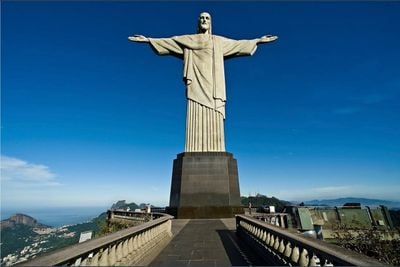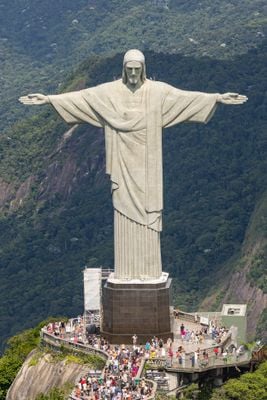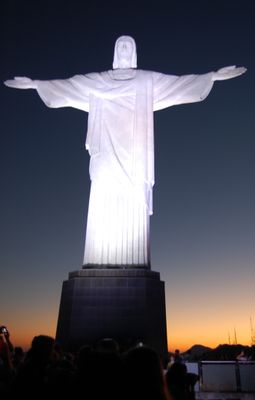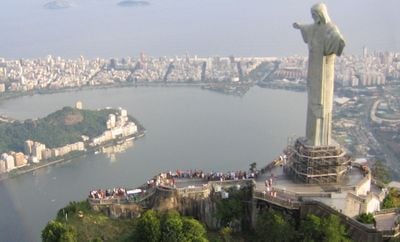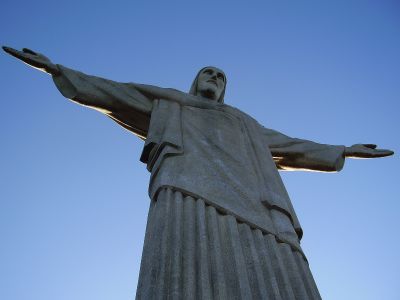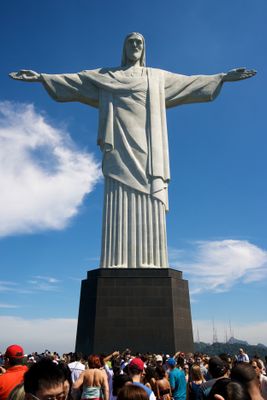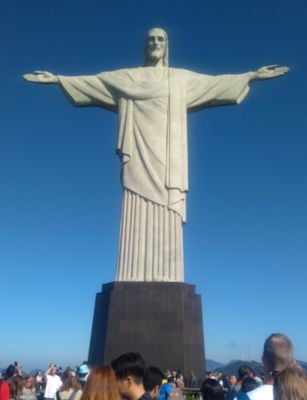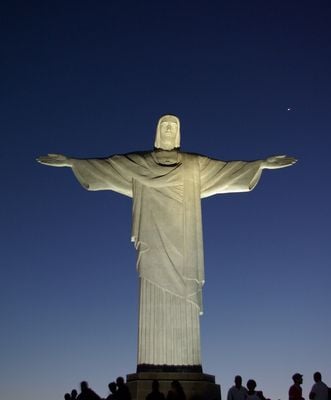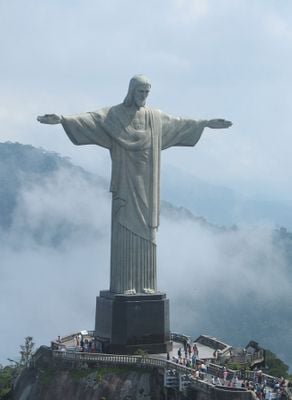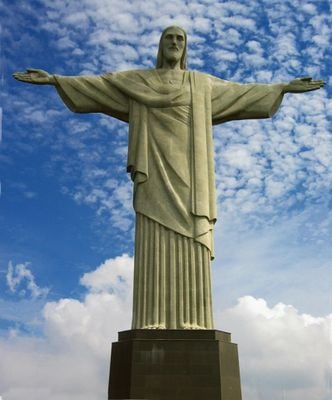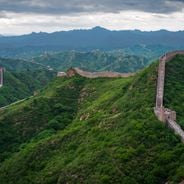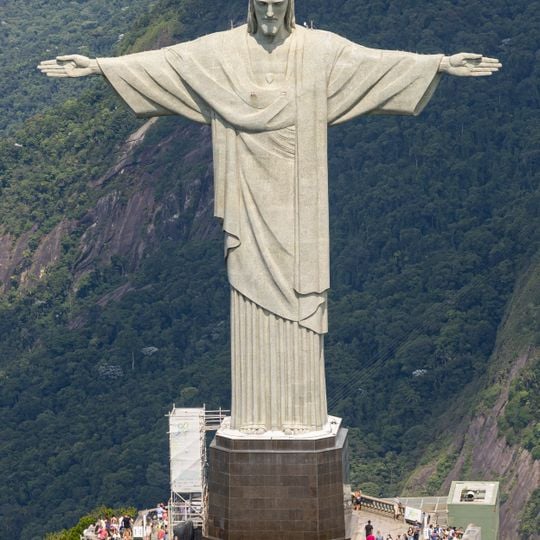
Christ the Redeemer, Art Deco statue on Corcovado Mountain in Rio de Janeiro, Brazil
Christ the Redeemer is a reinforced concrete and soapstone sculpture atop Corcovado Mountain in Rio de Janeiro, Brazil. The figure reaches 30 meters (98 feet) in height, with outstretched arms spanning 28 meters (92 feet), making it visible from many parts of the city below.
French sculptor Paul Landowski and Brazilian engineer Heitor da Silva Costa designed the monument, which was inaugurated on October 12, 1931. Construction lasted nine years and required transporting materials up the mountain.
The sculpture draws pilgrims who come to pray or hold religious ceremonies, while others visit the summit as a national symbol. Groups of different backgrounds gather daily at the base of the monument, taking photographs or simply standing quietly before the outstretched figure.
Visitors reach the summit by Corcovado Train from Cosme Velho neighborhood or by minivans through Tijuca National Park. Early morning or late afternoon offers fewer crowds and better light for photographs.
Romanian sculptor Gheorghe Leonida crafted the face of the figure, while the entire construction weighs around 1,040 metric tons (1,145 tons). Lightning strikes the structure an average of three to five times each year, requiring regular restoration of the stone surface.
Location: Alto da Boa Vista
Inception: 1920
Architects: Albert Caquot, Paul Landowski, Gheorghe Leonida
Creator: Paul Landowski, Carlos Oswald
Official opening: October 12, 1931
Elevation above the sea: 709 m
Height: 8 m
Made from material: reinforced concrete, soapstone
Address: Parque Nacional da Tijuca - Alto da Boa Vista, Rio de Janeiro - RJ
Opening Hours: Monday-Sunday 08:00-19:00
Website: http://corcovado.com.br
GPS coordinates: -22.95192,-43.21046
Latest update: December 2, 2025 21:10
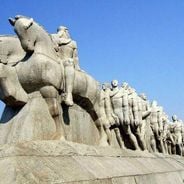
Brazilian architectural heritage reflects centuries of history, from colonial fortifications to contemporary structures. In São Paulo, the Flag Monument pays tribute to colonial expeditions, while in Belém, the Peace Theater recalls the prosperity of the rubber era. In Curitiba, the Oscar Niemeyer...
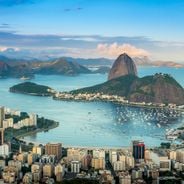
Rio de Janeiro is more than a city; it is a living backdrop. Between mountains and sea, the Brazilian metropolis showcases its most famous landscapes: Christ the Redeemer overlooking Guanabara Bay, Sugarloaf shining in the sun, Ipanema and Copacabana beaches where music and sand never sleep. But Rio...
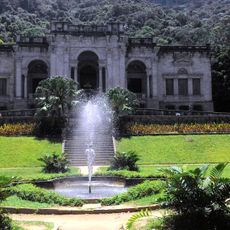
Parque Lage
979 m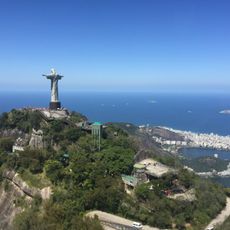
Corcovado
13 m
Solar dos Abacaxis
1.6 km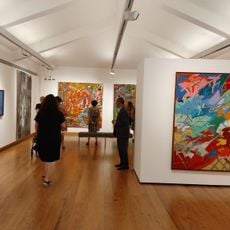
Instituto casa Roberto Marinho
1.5 km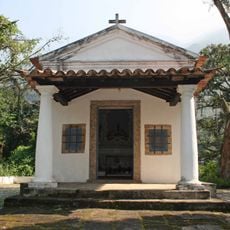
Chapel of Our Lady of Cabeça
1.5 km
Obra do Berço
1.5 km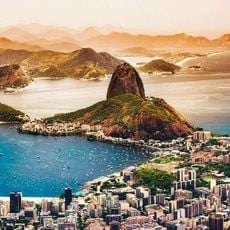
Environmental Protection Area of Santa Teresa
858 m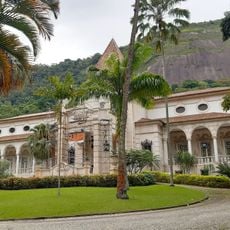
Palácio de São Clemente
1.5 km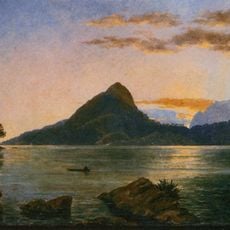
Geyer collection
1.3 km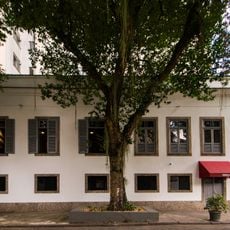
Imóvel à Rua Capistrano de Abreu, nº 45
1.5 km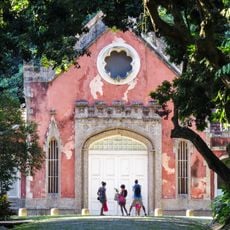
Parque Henrique Lage
766 m
Statue of Quintino Bocaiúva
1.3 km
Fernando Baptista Gonçalves
1.3 km
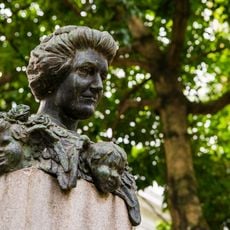
Clarisse Índio do Brasil
1.4 km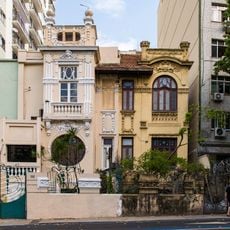
Imóvel da rua Voluntários da Pátria, n.º 457
1.5 km
À Tom Jobim, O Estudante
990 m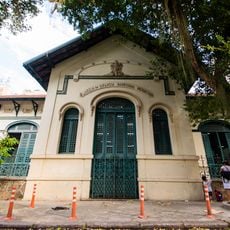
Edifício do Jardim de Infância Marechal Hermes
1.6 km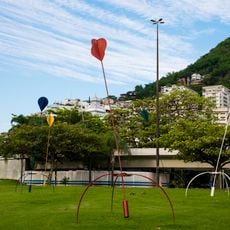
Balões ou Ritual do Vento
1.3 km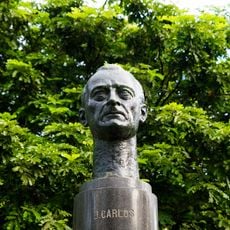
J.Carlos
1.2 km
Fonte Harmonia
1.4 km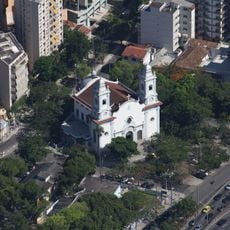
Igreja Matriz Santa Margarida Maria
1.4 km
Irmãos André e Antônio Rebouças
1.4 km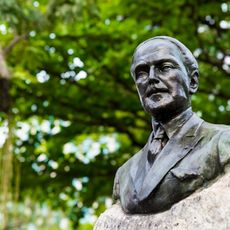
Manuel Madruga
1.2 km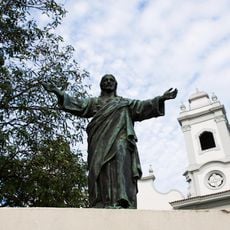
Sagrado Coração de Jesus
1.3 km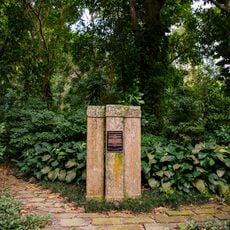
À Maria do Carmo Nabuco
1.1 km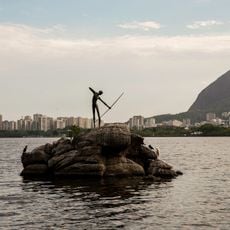
Curumim
1.3 km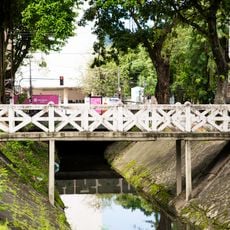
Guarda-corpo da Rua Lineu de Paula Machado
1.6 kmVisited this place? Tap the stars to rate it and share your experience / photos with the community! Try now! You can cancel it anytime.
Discover hidden gems everywhere you go!
From secret cafés to breathtaking viewpoints, skip the crowded tourist spots and find places that match your style. Our app makes it easy with voice search, smart filtering, route optimization, and insider tips from travelers worldwide. Download now for the complete mobile experience.

A unique approach to discovering new places❞
— Le Figaro
All the places worth exploring❞
— France Info
A tailor-made excursion in just a few clicks❞
— 20 Minutes
